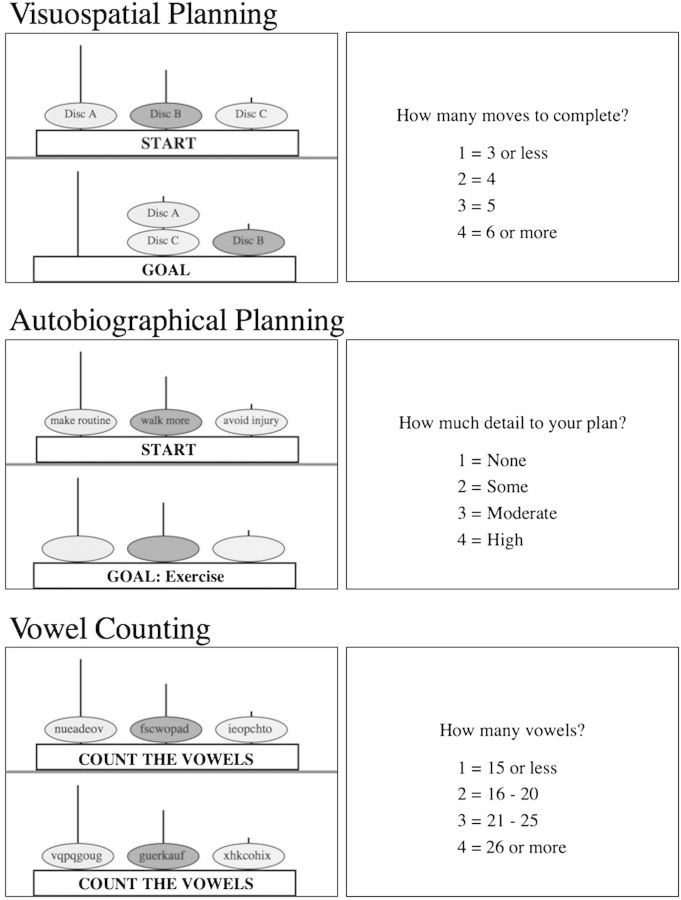Figure 1.
Task stimuli. For the visuospatial planning condition, participants performed the Tower of London task. In this condition, participants saw the goal configuration for 5 s, then the start configuration for a maximum of 20 s, and determined the minimum number of moves to match the start with the goal configuration. Participants then indicated the minimum number of moves to solve the puzzle. In the autobiographical planning task condition, participants were presented with a goal state, followed by a combination of 2 steps and an obstacle related to that goal printed in the discs. Participants integrated the steps and obstacle into a realistic and coherent personal plan, involving them, to reach that goal in their life. In this example, participants interpreted the goal “Exercise” for 5 s. For up to 20 s, participants integrated the steps “make routine,” “walk more” as well as the obstacle “avoid injury” into a plan to exercise. Next, participants rated the level of detail in their plan. In the vowel counting condition, participants were informed they would count vowels, then random letter sequences appeared in the discs. Next, participants indicated the number of vowels counted. If participants completed any of the tasks prior to 20 s, a button was pressed and the screen advanced to the rating screen. Remaining time was added to the intertrial interval.

